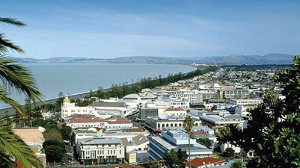
The latest QV House Price Index has property values nationwide up by 3.0% year-on-year and by 0.7% in the three months to February, leaving the average national value at $686,050.
While this does reinforce that values are still growing, the rate of growth stands in stark contrast to that seen in recent years.
National values grew by 6.5% in the year to February 2018 and by 12% in the year to February 2017.
Of the bigger centres, the Auckland region’s values were down by 0.9% year-on-year and by 0.6% over the three months to February, leaving the region’s average value is now $1,044,576.
Christchurch also saw its values decline over the last quarter (by -0.1%), but Wellington saw value growth of 2%. Only Dunedin continued to see relatively strong quarterly value growth of 4%.
However, many smaller, more affordable regional markets did see solid value growth in the new QV data, with Hawkes Bay markets that leading the pack.
Hastings saw 9.9% quarterly growth (taking its average value to $511,442) while Napier clocked 5.2% quarterly growth (which left its average value at $549,207).
Rotorua also saw solid growth of 4.2% in the three months to February, while lower North Island provincial areas, like Manawatu, Masterton and Carterton, are experiencing strong annual growth rates.
QV general manager David Nagel says their latest figures paint a bit of a mixed picture.
“On the one hand, we’ve got more affordable, smaller provincial towns who are still in their upward growth stage. Then the likes of Auckland are much further down their growth lifecycle and are now seeing values flatten after a period of sustained value growth.”
Nationally, the rate of annual growth has dropped from 6.5% to 3.0% over the past year, which does suggest that the heat has certainly been taken out of the market, he says.
“But we’re seeing some interesting trends at the suburb level, where affordability constraints are seeing values slow in many higher value areas.
“For example, the wider Wellington region continues to see a general slowdown in the rate of growth and it’s the more affordable areas, such as Upper Hutt, which are seeing some of the highest rates of growth as first home buyers and investors seek value for money.”
Nagel adds that, interestingly, investors appear to remain fairly active.
“We’ll be closely watching how investor behaviour changes in the coming months, as we gain more certainty around the government’s stance on the recommendations put forward by the Tax Working Group.”
For CoreLogic head of research Nick Goodall, the QV data suggests there’s still some heat left in the New Zealand property market - just not in Auckland.
“Low affordability remains a significant handbrake on Auckland property values and, while we have seen signs of vendors adjusting their expectations to get a sale, this approach is not citywide.”
Looking round the rest of the country, there remains a shortage of properties listed for sale, which is ensuring that some price pressure remains, he says.
“We believe that with robust fundamentals (strong - if slowing- population growth, low interest rates and a lack of supply, despite encouraging new build consent figures) the market outlook is solid.
“This should guard against any mass investor sell-offs. Significant value drops are therefore less likely.”



